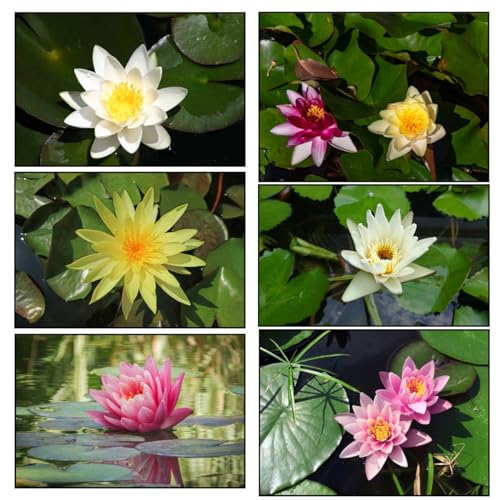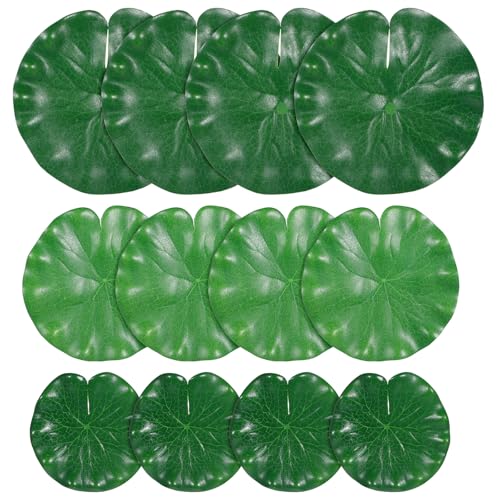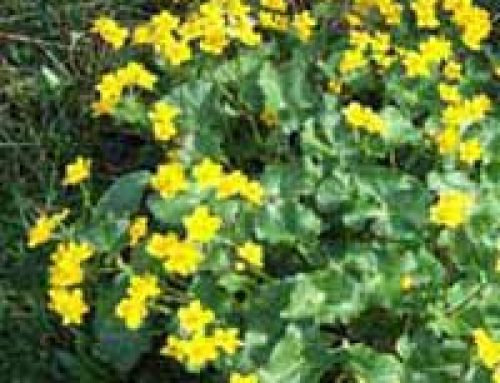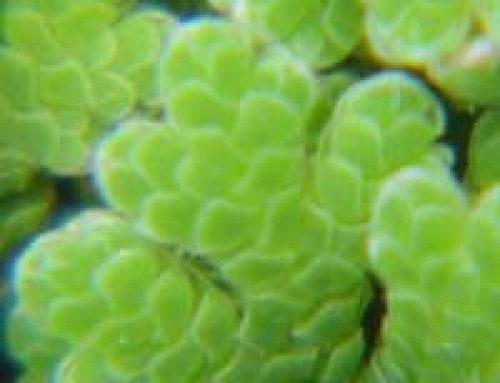There’s nothing quite like a water lily but adding one of these striking and instantly recognisable aquatic plants to a pond is not without its problems.
 The huge number of varieties available coupled with their range of sizes – from small examples which would barely cover a square foot (0.1sq m) of pond surface to giants that can easily blanket an area fifty times as large – make choosing the right one as difficult as it is important.
The huge number of varieties available coupled with their range of sizes – from small examples which would barely cover a square foot (0.1sq m) of pond surface to giants that can easily blanket an area fifty times as large – make choosing the right one as difficult as it is important.
Add to this that although all water lilies need good daily exposure to full sun if they are to flower properly, exactly how long they need varies considerably between the different kinds and picking something appropriate can become quite complicated.
Fortunately, there are ways to take a lot of the uncertainty out of the job, and with a little careful research, you should be able to find just the right lily for your pond without too much trouble.
Picking the Right Size pond lily
Water lilies are normally grouped into four broad categories – dwarf, small, medium and vigorous – and although this isn’t a perfect system, since some lilies don’t really fit neatly into one category or another, it’s a pretty good starting point and works well enough most of the time.
Members of the ‘vigorous’ group are not candidates for the garden – unless, that is, yours includes a lake or a slow moving river! Deciding which of the remaining three general types you should be looking for obviously depends on the size of your pond and the trick is to pick your lilies so that when they’re fully grown, they’ll still leave around half of the pond’s surface area uncovered. It doesn’t matter whether you’re planning on a single specimen lily or two or three varieties, the same rule applies; the combined total cover shouldn’t amount to more than 50 per cent of the pond.
Once you’ve worked out the surface area of your pond, the rest becomes fairly straight forward and all that remains is to find a lily to suit your needs from the appropriate group. There’s a good range of colours and growing habits in all of them, so whatever you’re looking for, you shouldn’t be disappointed. Look out for varieties labelled ‘changeable’ – their flowers start out yellow, before turning pink and finally red; if the idea appeals, it can certainly add a little extra interest to the pond.
Other types of pond plants:
Oxygenating pond plants, marginal pond plants, pond edge plants, floating pond plants, floating pond water lilies and deep water pond plants.
Best Dwarf Lilies for ponds – Find the best water lily for small pond
With a spread of 12 to 24 inches (30-60cm) and covering between 1 and 3 square feet (0.1 – 0.3sq m) when fully grown, dwarf lilies in general are ideally suited to small ponds, while some of the smallest of their kind can safely be used in tubs and half-barrels.
They need a planting depth of around 6 inches (15cm) and will repay selection with a series of small but beautiful flowers over the summer.
Some of the best kinds to consider include:
- Nymphaea ‘Aurora’ – a compact ‘changeable’ variety, suited to tubs as well as small ponds.
- Nymphaea ‘Paul Hariot’ – another ‘changeable’ it has big flowers for a dwarf variety.
- N. pygmaea‘Alba’ – a tiny flowering variety ideal for the smallest of water features.
- N. pygmaea‘Helvola’ – a popular and attractive lily, with prolific yellow star shaped flowers.
Small Lilies for ponds
Small lilies typically need a planting depth of around a foot (30cm) and cover an area of around 3 – 12 square feet (0.3 – 1.1sq m), with a spread of between 2 and 4 feet (0.6 – 1.2m). Small lilies will do well in small ponds, and offer larger flowers than most of the dwarf varieties.
Look out for the following varieties, amongst others:
- Nymphaea ‘Froebeli’ – not particularly commonly seen, but well worth trying; produces prolific deep red flowers.
- Nymphaea ‘Laydekeri’ – a number of Laydekeri varieties exist, all of which are ideal for even very small ponds.
- Nymphaea ‘Sioux’ – a ‘changeable’ variety with distinctively pointed petals and purple spotted leaves.
Medium Lilies for ponds
Perfect as a specimen lily in larger ponds, this group’s members will cover up to 20 square feet (1.8sq m) of the surface when they are fully grown, having a spread of around 5 feet (1.5m) per plant. These lilies typically require a planting depth of between 18 inches and 2 feet (45- 60cm).
Good examples include:
- Nymphaea marliacea ‘Albida’ – an ever-popular favourite, with prolific and highly fragrant snow white flowers.
- Nymphaea ‘Maseniello’ – a strong and prolific hybrid lily, with rose-pink flowers; inclined to spread, so it’s not suitable for very small ponds.
- Nymphaea atropurpurea – deep red, cup shaped flowers, suitable for most ponds with a surface area of around 35 square feet (3.2 sq m) or more.
Tempting though an attractive photograph may be – or a ‘bargain’ price – it’s well worth making sure that the lily you pick really is the right one for your pond; in the long run, you’ll be glad you did.
Types of water lilies
- Aponogeton distachyos – Water Hawthorn: This aquatic plant is also known as the Cape Pondweed or Waterblommetjie. It is native to South Africa and has fragrant white flowers that bloom above the water surface. It is popular in water gardens for its attractive appearance and delicate scent.
- Nymphaea Aurora – Dwarf Waterlily: This aquatic plant is a dwarf variety of water lily, with small, pink flowers that bloom above the water surface. It is well-suited for small ponds and water features, as it does not require a large amount of space to grow.
- Nymphaea Candidissima – Small White Waterlily: This aquatic plant is a small white water lily that is native to Europe and Asia. It has small, fragrant flowers that bloom above the water surface and is often grown in small ponds and water gardens.
- Nymphaea Indiana – Apricot to Pink Dwarf Waterlily: This aquatic plant is a dwarf variety of water lily, with apricot to pink flowers that bloom above the water surface. It is well-suited for small ponds and water features, as it does not require a large amount of space to grow.
- Nymphaea Paul Hariot – Changeable Colored Dwarf Waterlily: This aquatic plant is a dwarf variety of water lily, with flowers that change color from pink to yellow as they mature. It is a popular choice for small ponds and water gardens.
- Nymphaea Perry’s Baby Red – Rounded Red Dwarf Waterlily: This aquatic plant is a dwarf variety of water lily, with rounded red flowers that bloom above the water surface. It is well-suited for small ponds and water features, as it does not require a large amount of space to grow.
- Nymphaea Xiafei – Small Red Flower Dwarf Waterlily: This aquatic plant is a dwarf variety of water lily, with small red flowers that bloom above the water surface. It is well-suited for small ponds and water features, as it does not require a large amount of space to grow.
- Hydrocharis morsus-ranae – Frogbit: This aquatic plant is also known as European frogbit, and is a small, floating plant that resembles a miniature water lily. It is often used in water gardens and ponds to provide shade and shelter for fish and other aquatic creatures.
- Nymphaea pygmaea helvola – Miniature Pale Yellow Waterlily: This aquatic plant is a miniature variety of water lily, with small, pale yellow flowers that bloom above the water surface. It is well-suited for small ponds and water features, as it does not require a large amount of space to grow.
- Nymphaea pygmaea rubra – Miniature Pink Waterlily: This aquatic plant is a miniature variety of water lily, with small, pink flowers that bloom above the water surface. It is well-suited for small ponds and water features, as it does not require a large amount of space to grow.
- Nymphaea Snow Princess – White Waterlily with Red Leaves: This aquatic plant is a white water lily with red leaves that is popular in water gardens and ponds. It has large, fragrant flowers that bloom above the water surface.
- Nymphaea alba – White Waterlily (British Native): This aquatic plant is a native of Europe and has white, fragrant flowers that bloom above the water surface. It is often grown in water gardens and ponds.
- Hydrocharis morsus-ranae – Frogbit: Frogbit is a floating aquatic plant that belongs to the water lily family. It has small, round leaves that float on the water surface and tiny white flowers that bloom in summer. Frogbit is often used in ponds and aquariums as it is easy to care for and helps to keep the water clean.
- Nymphaea pygmaea helvola – Miniature Pale Yellow Waterlily: Miniature Pale Yellow Waterlily is a small, hardy water lily with bright yellow flowers that bloom in summer. It is ideal for small ponds or container water gardens, and its small size makes it a good choice for smaller spaces.
- Nymphaea pygmaea rubra – Miniature Pink Waterlily: Miniature Pink Waterlily is a tiny, hardy water lily that produces small pink flowers that bloom in summer. It is perfect for small ponds or container water gardens and can add a splash of color to any water feature.
- Nymphaea Snow Princess – White Waterlily with Red Leaves: Snow Princess is a stunning water lily with pure white flowers and red-tinged leaves. It is a hardy plant that can tolerate a wide range of water conditions, making it a popular choice for pond owners.
- Nymphaea alba – White Waterlily (British Native): The White Waterlily is a native British plant that produces large, fragrant, white flowers that bloom from June to September. It is an ideal plant for larger ponds and lakes, where its large leaves provide shelter for fish and other wildlife.
- Nymphaea Attraction – Red Waterlily: Attraction is a striking water lily with bright red flowers that bloom from June to September. It is a hardy plant that can grow in a wide range of water conditions and is perfect for adding a splash of color to any pond or water feature.
- Nymphaea Black Princess – Dark Maroon Waterlily: Black Princess is a stunning water lily with dark maroon flowers that bloom in summer. It is a hardy plant that can tolerate a wide range of water conditions and is perfect for adding drama and contrast to any pond or water feature.
- Nymphaea Darwin – Pink Waterlily with Orange Centre: Darwin is a beautiful water lily with pink flowers and an orange center that bloom from June to September. It is a hardy plant that can grow in a wide range of water conditions and is perfect for adding a touch of elegance to any pond or water feature.
- Nymphaea Gladstoniana – Large White Waterlily: Gladstoniana is a large, hardy water lily with white flowers that bloom from June to September. It is ideal for larger ponds and lakes, where its large leaves provide shelter for fish and other wildlife.
- Nymphaea Gloriosa – Blue Waterlily (Egyptian): Gloriosa is a stunning blue water lily that was originally native to Egypt. It has large, fragrant blue flowers that bloom in summer and is a hardy plant that can grow in a wide range of water conditions.
A big list of water lilies and similar plants for your pond!
Plant Name | Description | Suitable Location | Water Depth |
APONOGETON DISTACHYOS | Oval floating leaves with scented white flowers | Sunny or partially shaded pond | 30-60cm (12''-24'') |
NYMPHAEA AURORA | Dwarf changeable waterlily with yellow and orange/red flowers | Still and sunny position | 15cm (6") |
NYMPHAEA CANDIDA | Dwarf white waterlily with 5cm (2") wide flowers | Still and sunny position | 15cm (6") |
NYMPHAEA FIRECREST | Dwarf pink waterlily with 4cm (1.5") wide flowers | Still and sunny position | 15cm (6") |
NYMPHAEA LAYDEKERI FULGENS | Dwarf red waterlily with 4cm (1.5") wide flowers | Still and sunny position | 15cm (6") |
NYMPHAEA PAUL HARIOT | Dwarf waterlily with yellow and orange/red spiky flowers | Still and sunny position | 15cm (6") |
NYMPHAEA PERRY'S BABY RED | Dwarf red waterlily with 5cm (2") wide flowers | Still and sunny position | 15cm (6") |
NYMPHAEA PYGMAEA ALBA | Miniature white waterlily with 3cm (1" .) wide flowers | Still and sunny position | 15cm (6") |
NYMPHAEA PYGMAEA HELVOLA | Miniature yellow waterlily with 3cm (1") wide flowers | Still and sunny position | 15cm (6") |
NYMPHAEA PYGMAEA RUBRA | Miniature red/pink waterlily with 3–5cm (1-2” ) wide flowers | Miniature patio pond container or tiny pond | Approximately 15cm (6'') |
NYMPHAEA SNOW PRINCESS | This miniature waterlily has white flowers and red leaves, with each flower being 5cm (2") wide. The plant can spread up to 60cm (24") and is suitable for a large container or small pond. It should be planted with 15cm (6") of water over the soil in a still, sunny position. | Large container or small pond | 15cm (6") |
NYMPHAEA ALBA (British Native) | This large waterlily has a spread of approximately 120cm (48") and white flowers that are 10cm (4") in size. It is suitable for a still, sunny position in a medium pond and should be planted with up to 90cm (36") of water over the soil. | Medium pond | Up to 90cm (36") |
NYMPHAEA ATTRACTION | This medium/large waterlily has a spread of approximately 90cm (36") and pink/red flowers that are 10cm (4") in size. It is suitable for a still, sunny position in a medium pond and should be planted with up to 75cm (30") of water over the soil. | Medium pond | Up to 75cm (30") |
NYMPHAEA BLACK PRINCESS | This small/medium waterlily has a spread of approximately 90cm (36") and maroon flowers that are 10cm (4") in size. It is suitable for a still, sunny position in a medium pond and should be planted with 23-44cm (10-17") of water over the soil. | Medium pond | 23-44cm (10-17") |
NYMPHAEA BURGUNDY PRINCESS | This medium waterlily has a spread of approximately 60cm (23") and red flowers that are 5cm (2") in size. It is suitable for a still, sunny position in a medium pond and should be planted with 22-44cm (10-17") of water over the soil. | Medium pond | 22-44cm (10-17") |
NYMPHAEA DARWIN | This medium waterlily has a spread of approximately 75cm (30") and pink rounded flowers with petals that are 8cm (3") in size. It is suitable for a still, sunny position in a small/medium pond and should be planted with up to 75cm (30") of water over the soil. | Small/medium pond | Up to 75cm (30") |
NYMPHAEA FLORIDA SUNSET | Large waterlily with double yellow-peach-pink flowers, 10cm(4") suitable for a medium pond | Still, sunny position in a medium pond | 30-60cm (12''-24'') |
NYMPHAEA GLADSTONIANA | Large waterlily with white rounded flowers, 10cm(4") | Still, sunny position in a medium pond | Up to 90cm (36'') |
NYMPHAEA GONNERE | Small-medium waterlily with white double flowers, 8cm (3") suitable for a small/medium pond | Still, sunny position in a medium pond | 30-60cm (12''-24'') |
NYMPHAEA MADAME WILFRON GONNERE | Small-medium waterlily with pink flowers, 8cm (3") suitable for a medium pond | Still, sunny position in a medium pond | 30-60cm (12''-24'') |
NYMPHAEA MARLIACEA ALBIDA | Medium waterlily with white flowers, 8cm(3") | Still, sunny position in a medium pond | 40-60cm (16''-24'') |
NYMPHAEA MARLIACEA CARNEA | Medium-large waterlily with cream-pink flowers, 7cm (3") | Still, sunny position in a medium pond | Up to 75cm (30'') |
NYMPHAEA MRS RICHMOND | Medium-large waterlily with pink/red semi-double flowers, 8cm (3") | Still, sunny position in a medium pond | Up to 75cm (30'') |
HYDROCHARIS MORSUS-RANAE (Frogbit) | British native floating plant with 2cm (1") leaves and white flowers in summer | Sunny or partially shaded pond surface | Drop into pond in Summer only |
STRATIOTES ALOIDES (Water Soldier) | British native floating pond plant with spiked foliage, 10cm (4") and white flowers in June/July | Sunny or partially shaded pond surface | Drop into deep area of pond |

















This is the first webpage to come close to answering my questions about what size water Lilly I need for my “pond”. We’ve got a large above ground pool that is no longer being swum in, and since it’s on well water, hadn’t been treated chemically in over a year, we put fish in it. Now I’m hunting plants to filter and oxygenate the water, and I’d like to add a Lilly. The pool is circular and about 22′ across, and I can adjust the water level as needed. Ideally I’d like to be able to have it well stocked with various plants, I’ve already added some duckweed, and some other native plants I found in the creek. With the size I have, would large or medium sized water Lilly be better?
I put a water soldier on my new pond but since it’s been in there, it’s leaves have gone brown. What should I do?
What do you mean by ‘spread’ and ‘area covered’ – to mean they are the same thing but you give different values for them. Can you explain please.
Hello, I have a smallish pond with quite a large lily in place could this be the reason why my water level is constantly falling or could it be that I have a dreaded leak !!! Any ideas anybody ? Regards Mick.
Anyone got any lillies to let me have for my water garden. I’m in Sheffield 07732858004
I have a proud 3.5 meters long 2.3.meters wide from 2 foot 6 to 4 foot 6 I get a lot of sun in my garden looking for water lily’s with big leaves 2 cover 50% of which ones do I get
The water lilies have grown well, but the flowers, when produced haven’t opened. I wondered why? Also the water soldiers seem to have not surfaced and have gone off colour.
Why are some of my water lily leaves, both on the surface and still submerged, brown instead of green? One even seems to be turning brown having started out green.
I have a small pond 5” x 4” and 2” deep. We have 8 small goldfish. It also has a small slow running waterfall dropping into the pond from a height of about 1”. What size and type of water Lillie would you recommend for this size and type of pond? Thank you